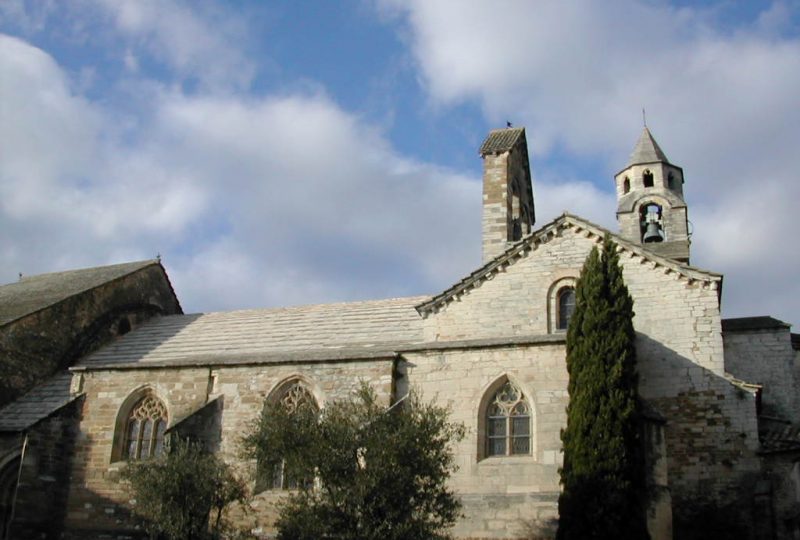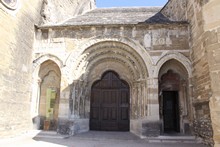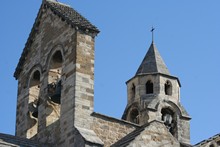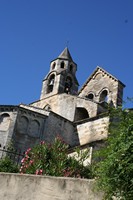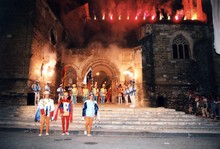Beautiful 12th-century Romanesque church. Exceptional organ buffet.
Description
A primitive Romanesque church :
The Church of Notre-Dame de Nazareth may have been a Benedictine priory in the XIth century, but the primitive part in the shape of a Latin cross (apse, transept, nave) dates back only to the XIIth century. Its ornamentation is very simple. The building has ail the features of Provençal Romanesque art: monumental nave with a barrel vault, extensive wall surfaces, capitals inspired by ancient art in the decoration of the chevet.
Enlargement of the church :
The church was enlarged as early as the XIIth century: the side aisles were built onto the external walls with half barrel vaults. From the XVth century, the families and guilds of Valréas built many chapels.
Exterior of the church :
The three openings of the lateral portal have adorned archivolts and capitals that are finely-worked with flowers, petals and sculpted figurines. They have a well-balanced composition of small columns and semicircular arches. The west portal is decorated with elegant columns by artists of the XIlIth and XIVth centuries with original sculptures, such as a monk and a wild boar in foliage on a capital and a statue of Saint Vincent inset at the top of the facade just above a remarkable rose window. There are two bell towers above the transepts. The oldest one (XVth century) is an octagonal campanile with a conical spire, while the second one, made up of three arcades and housing the bells, was built in a purely Provençal style. The apse wall is composed of five rectangular sections strengthened by pilasters with capitals.
The monumentality of the parish church shows the importance of Valréas in the Middle Ages.
The organ :
The organ is protected by a preservation order. In 1602, Jean Duviviers was asked to build an organ similar to the one in Cavaillon. In the XIXth century, the instrument was enlarged and modified: it now has 12 stops and a pedal-board. It bears the town’s coat of arms. Its Italian-style wooden case is sculpted with dragons and angels surrounded by vegetation and is painted in polychrome and decorated with gold.
Jean Siffren MAURY — Cardinal Maury
Born in Valréas in 1746, Cardinal Maury, who was a prestigious orator and who became a member of the Académie thanks to his writings, was appointed archbishop of Paris. His political commitment (protest against the arrest of the Royal Family) led him into exile in Italy. Back in France in 1806, he became a cardinal. In 1814, he took sides against the Emperor. The copies of his book “Mémoire pour le Cardinal Maury” were then seized and destroyed, and his powers were taken away. In 1815 he was arrested and imprisoned. He died in Rome in 1817 and rests in the papal chapel of Vallicella among famous characters like Baronius and Tarugy (archbishops of Avignon). You can see busts of him in the sacristy of the church of Notre-Dame de Nazareth, in the Simiane Mansion and on the fountain in Cardinal Maury Square.
Themes
- Religious heritage
- Church
Opening
Visit
Individual tour
- Unguided individual tours available permanently
Group tour
- Guided group tours on request
Rate
Amenities and Services
- Guided tours
- Tour free of charge

